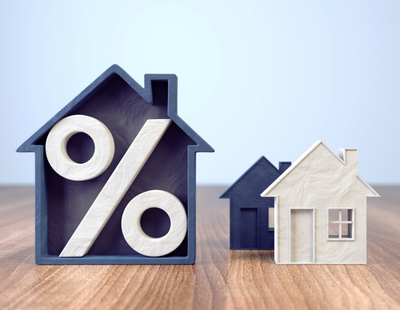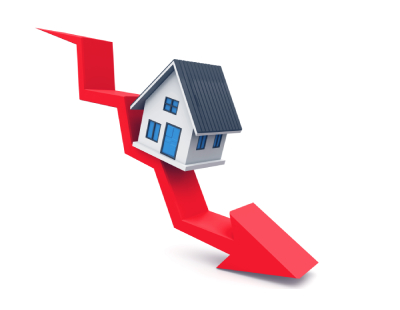The research also highlights that new instructions were surprisingly up by 2% last year compared with 2022 and continued to average around 400,000 per quarter, “closer to a volume seen in a ‘normal’ market.”
Alex Bannister, an economist and independent board adviser to TwentyCi said: “A year ago, the consensus forecast* suggested residential property prices in the UK would drop by 6% in 2023 amidst a shrinking economy and a view that property was substantially overvalued.
“It appears most commentators overestimated the negative effects of higher mortgage rates on affordability and while sellers reduced asking prices, this did little to reverse the pandemic-driven surge.”
Colin Bradshaw, chief executive of TwentyCi, suggested the tide is now turning on overoptimistic pricing.
The average asking price of property coming to market is £429,000, up by £7,000 compared to 2022, which is reflective of the type of stock available on the market, TwentyCi said.
On average, sellers across the UK achieved 96.6% of their original asking price last year, a decrease from the 99.4% achieved in 2022, its research found.
Sellers in Scotland enjoyed prices surpassing their initial instruction with a price instructed vs. price achieved of 105.9%.
Inner London fared the least favourably, with just 94.6% of price instructed v price achieved, with sellers forced to accept lower offers if they wanted to close a deal.
Outer London similarly saw 95.7% of price instructed vs. price Achieved, with buyers able to negotiate better deals.
TwentyCi’s analysis also found that price changes and withdrawn volumes have both jumped significantly.
Price alterations rose by 66% compared with 2022 as sellers became more realistic with their expectations, despite this, there has not been any major recalibration of property values, TwentyCi said.
The data firm said 46% of Withdrawn properties came back to the market within a year and 58% returned to the market within two years.
The volume of exchanges has fallen significantly, down by more than 20% year on year. This figure is 13% lower than the pre-pandemic 2019. However, fall-throughs have declined year on year by 14%.
Bradshaw added: “Many sellers have been overly optimistic about pricing, and it seems the tide is finally changing. Mortgage affordability and increased supply are forcing a shift in properties with overinflated pricing.
“The housing market is holding up rather well despite everything being thrown at it. I am not saying all is rosy in the garden, rather given the circumstances 2023 could have been a whole lot worse.
“There is still a lot of uncertainty both in the housing market and the economy generally and yet there are some good signs that the market is both robust and, moreover, will stay that way in 2024.
“It’s likely that we have not yet seen the full impact of the interest rate rise “price shock” on mortgage availability and affordability due to fixed-rate products, but the market fundamentals seen to date, indicate strong potential for 2024.”
Bannister added that while it’s impossible to guess the net effect of events such as the conflicts in Ukraine or the Middle East and a UK general election and Spring Budget, assuming these have minimal impact, he said: “The labour market remains robust with inflation under control, there is no obvious trigger for a further reduction in average UK house prices.
“With rents rising fast, home ownership remains attractive and so prices remain underpinned given the limited supply of new homes. It’s undeniable that affordability is challenging for first-time buyers and those trading up, but it’s unlikely homeowners will ‘slash’ prices to ensure a sale rather than delay a move.”
He predicts that transaction levels will remain subdued at around 1m for another year. With household incomes rising and assuming interest rates remain at, or below, their current peak, Bannister also expects UK house prices to either be flat or rise by up to 5%.















.png)


.png)




Join the conversation
Be the first to comment (please use the comment box below)
Please login to comment